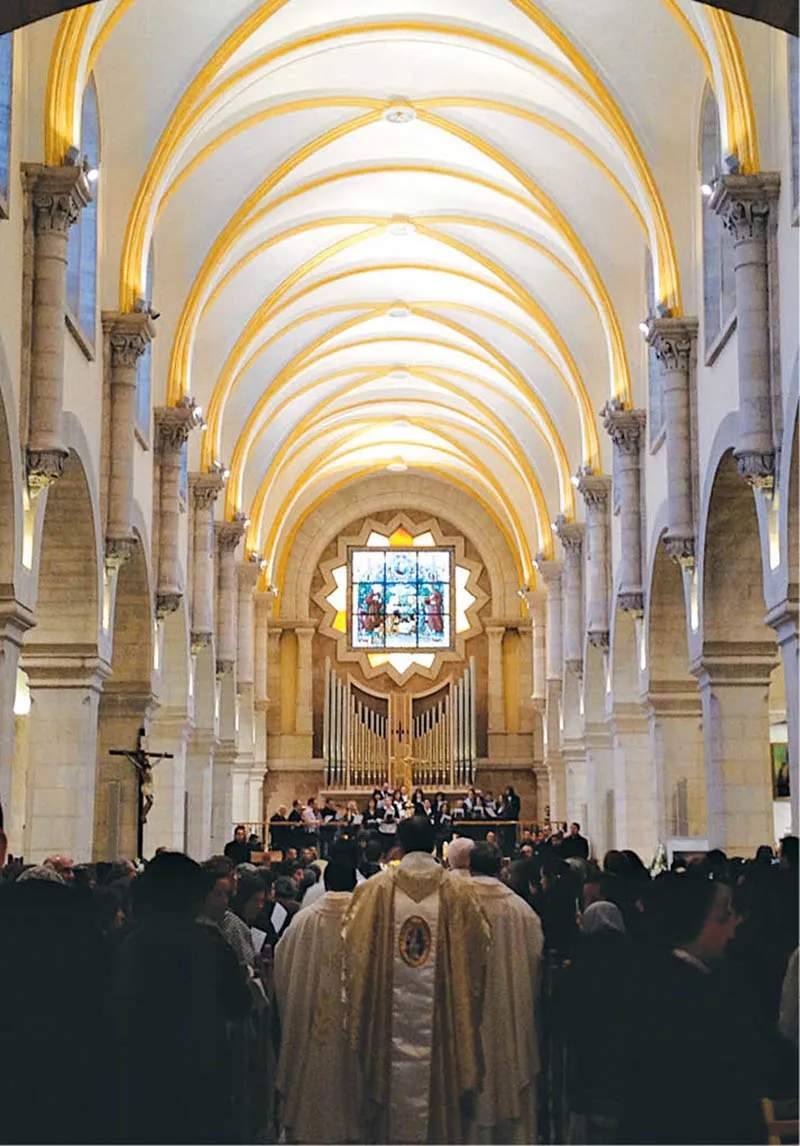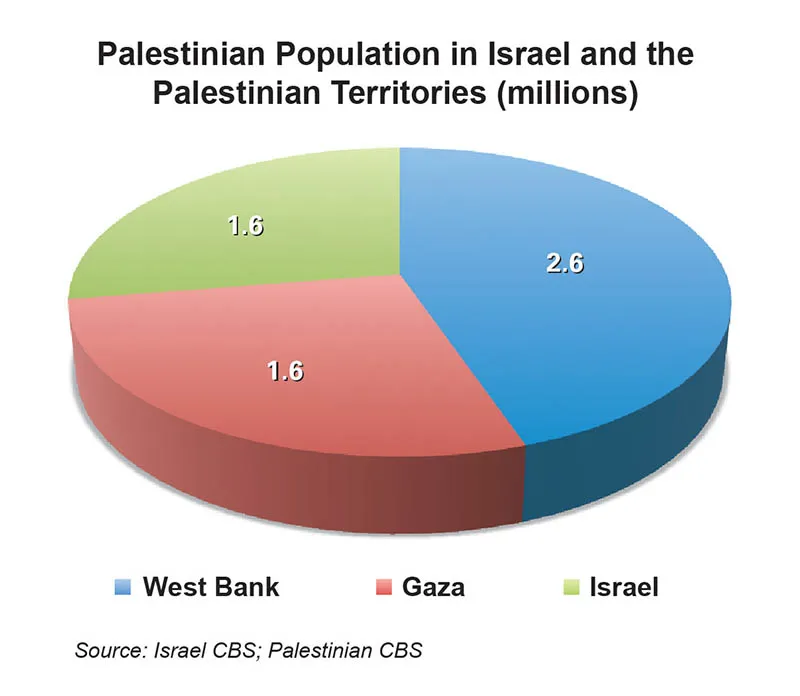1. Who, What, Where
“I’ve always wondered . . .” was the beginning of many of the questions I heard about the Israeli-Palestinian conflict. They are among the most common questions people have about the place, people and terms for this region of the world. Many of the questions seem simple, but the answers can be complex. Language is important in this part of the world, and the words used have different meanings depending on the speaker and the listener.
What countries are considered part of the Middle East?
The region known as the Middle East is where the continents of Asia, Africa and Europe meet. It is not a precise term, and the countries described as Middle Eastern vary by source. Most of the countries commonly considered part of the Middle East are located in Asia, but in some cases countries in North Africa are also included.
The term “Middle East” appeared for the first time in 1902 in an article written by a U.S. naval officer who recognized the strategic importance of the land.[1] It is sometimes called the Near East.
Asian countries almost always considered part of the Middle East are Bahrain, Iran, Iraq, Israel, Jordan,[2] Kuwait, Lebanon, Oman, Qatar, Saudi Arabia, Syria, United Arab Emirates and Yemen. The Palestinian Territories are also included (see p. 19).[3] Since the U.S. war in Afghanistan, and because of its religious and political connections, that country has sometimes been associated with the Middle East, but it is generally classified as part of South Asia.[4] It is not an Arab country.
Egypt is the African country most often included, and the African countries of Algeria, Libya, Morocco and Tunisia are sometimes considered part of the Middle East as well. Depending on the source, Turkey (which is part of Europe and Asia) is included, as are Armenia, Azerbaijan and Georgia, generally identified as European countries.[5]
Israel is one of the smallest countries by area in the region; Saudi Arabia and Iran are the largest. Israel’s size and proximity to hostile countries plays a significant role in how it frames its security concerns.
What exactly is the “Holy Land”?
Like many words and phrases used in and about this region, it’s all a matter of perspective. The Holy Land is most often considered modern-day Israel and the Palestinian Territories, although at different points in time the term has also included portions of Jordan, Lebanon, Egypt and Syria.
The land has sacred meaning in Judaism, Christianity and Islam. Jerusalem, in particular, is a sacred city to all three faiths.
American Christians often hear the term “Holy Land” in relation to a tour or pilgrimage to places of biblical (especially New Testament) significance—where Jesus was born, lived and died. The history of Christian pilgrimages to the land is traced to Helena, the mother of Constantine. After Constantine became ruler of the Roman Empire in the fourth century, Christianity flourished.
Christian Palestinians celebrate Mass at St. Catherine’s Church in Bethlehem.
Holy sites were identified and memorialized, and Christians were encouraged to make pilgrimage to the region.
Today, some Christians come to the Holy Land for deeply spiritual reasons, while others come to understand more about the geography and archeology of the land of the Bible. Such trips take visitors to sites in Israel as well as the West Bank, the Golan Heights and sometimes even Jordan. (In more peaceful times, tours included Egypt, Syria and Lebanon.)
One of the reasons this land has been at the center of conflict for centuries is because it has deep spiritual and theological meaning that goes beyond its geographic significance.
What is the “Promised Land”?
In the Bible it was the land promised by God to Abraham’s descendants, identified in that time as the land of Canaan. According to scholars, Canaan is equivalent to modern-day Israel, the Palestinian Territories, Lebanon, and parts of Jordan and Syria.[6]
In Judaism (and for some Christians) the promise is believed to have passed from Abraham to Isaac and then Jacob. In Islam, Abraham’s son Ishmael is included in this promise, which is also believed to include Christians and Muslims.
For some Jews and Christians, this promise of land is viewed as part of an ongoing covenant with the Jewish people. Other theologians say that descendants of Abraham include more than Jews. Some Christians believe the true spiritual Israel is the Christian church and the promised land is not a literal place but describes heaven.
What and where exactly is Palestine?
Historically, the area described as Palestine fell under the rule of various empires. The definition shifted, but ancient maps mark the area from the southern coast of the Mediterranean Sea to the interior of ancient Syria, bounded by Egypt and Arabia, with some variation of the word Palestine—the name given by the Romans to the region.
The Ottoman Empire ruled the land from 1517 to 1917, and the region was divided into several provinces. As that empire collapsed, the land was divided among various countries to govern. The 1917 Balfour Declaration expressed British support for “the establishment of a national home for the Jewish people in Palestine.” In 1922 the League of Nations (which was eventually replaced by the United Nations) formally placed a portion of the former empire under the British, who administered it under the “Mandate for Palestine.”
In 1947, the United Nations approved a plan to divide Mandatory Palestine into separate Jewish and Arab states, a plan accepted by the Jewish community but rejected by the Arabs living in and around the region. In 1948, with the support of the United Nations, Israel declared its independence as a state. Up until this point, many Jewish residents of the region called themselves Jewish Palestinians. After the establishment of Israel and the war that followed, only the Arab residents of the land were referred to as Palestinians. From 1948 to 1967 Jordan controlled the West Bank, and Egypt controlled Gaza. After the War of 1967, Israel took control of those two noncontiguous bodies of land, which became known as the Palestinian Territories.
The 1988 Palestinian Declaration of Independence asked for international recognition of the State of Palestine as a distinct nation. It did not define the borders of the state, although it included both the West Bank (with East Jerusalem) and the Gaza Strip. The 1988 Declaration and subsequent calls for recognition referenced the 1947 U.N. resolution that partitioned the region into two separate states. After the U.N. General Assembly voted to upgrade the status of the Palestinians in late 2012, 138 U.N. member states recognized Palestine as a separate state. The United States does not and describes the West Bank and Gaza as the Palestinian Territory/ies or the Occupied Palestinian Territories.
What is the West Bank?
Although the West Bank is located mostly to the east of Israel, it is west of the Jordan River. The term was first used when the territory became part of Jordan, to differentiate it from the territory on the east side of the river. Previously, the East Bank had been called Transjordan and the West Bank had been part of Mandatory Palestine. When the Hashemite Kingdom of Jordan annexed the West Bank (officially in 1950) the distinct areas began to be called the West Bank and Transjordan.
Residents of the West Bank became Jordanian citizens in 1950, and from 1950 to 1988 the West Bank was formally represented in Jordan’s parliament. Although Israel won control of the West Bank during the War of 1967, Jordan did not formally give up rights to the West Bank until 1988, when the Palestinian people declared their independence. At that point Jordan revoked citizenship from West Bank residents and recognized them as citizens of Palestine.
Some Israelis refer to the West Bank using the biblical names of Judea and Samaria.
What is the Gaza Strip?
The Gaza Strip is a narrow piece of land that runs along the Mediterranean Sea between Israel and Egypt. It was controlled by Egypt from 1948 to 1967, although it was never annexed, and was occupied by Israel after the War of 1967. Israel officially withdrew from Gaza in 2005. Although the West Bank and the Gaza Strip are both part of the Palestinian Territories, they are not geographically connected. At their closest they are still more than twenty miles apart, separated by Israel. Travel between the two regions is highly restricted by Israeli authorities.
Gaza’s border with Egypt was closed for many years but was reopened to people in 2011 and some goods in 2012.
Is there a “correct” name for the Palestinian Territories?
Countries that officially recognize Gaza and the West Bank as a separate state call it Palestine or the Palestinian State. The United States, Canada and many (but not all) European countries call the West Bank (including East Jerusalem) and Gaza the Palestinian Territory or Occupied Palestinian Territory. Some refer to the Occupied Territories or shorten it to OPT for “Occupied Palestinian Territory/ies.”
While the United States and most international bodies officially consider the West Bank and Gaza the Occupied Palestinian Territory, common usage drops “occupied” and uses the plural.
In Israel the West Bank is sometimes called disputed or administered territory by government officials. According to the Israeli Ministry of Foreign Affairs, “As the West Bank had no prior legitimate sovereign, under international law these areas cannot be considered as ‘occupied’ Arab or Palestinian lands, and their most accurate description would be that of disputed t...


